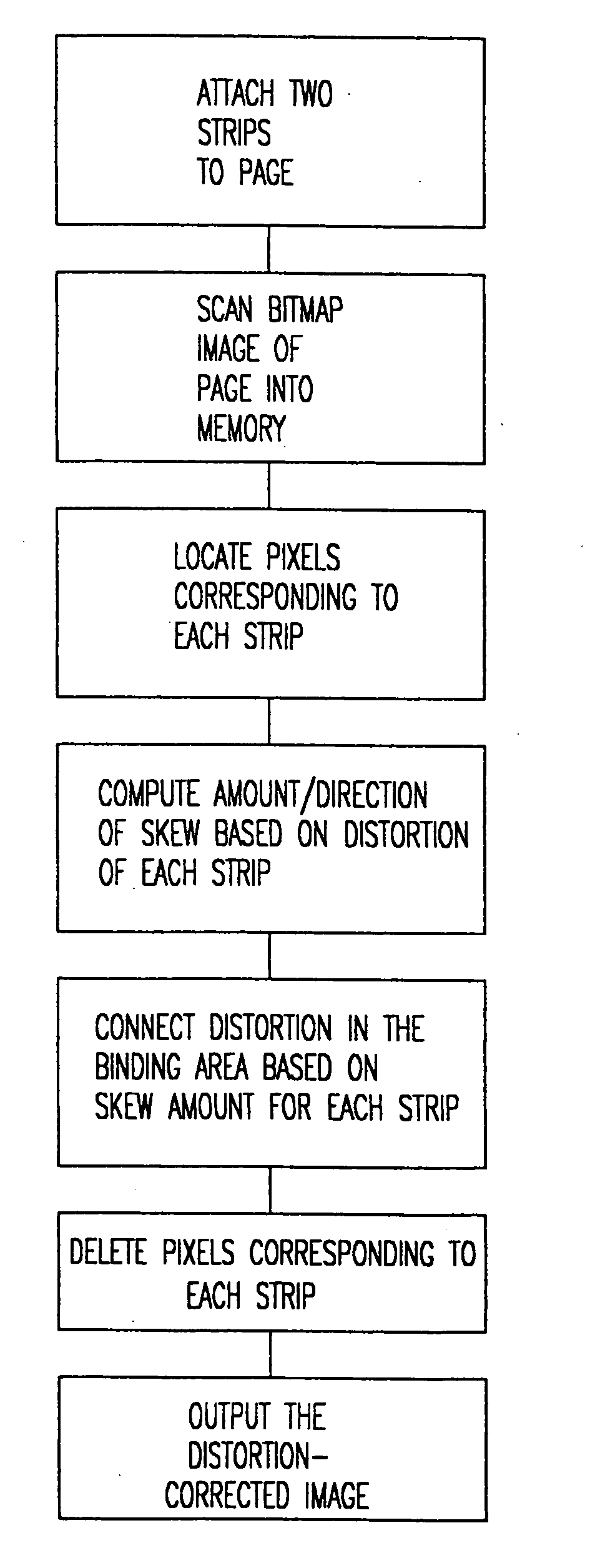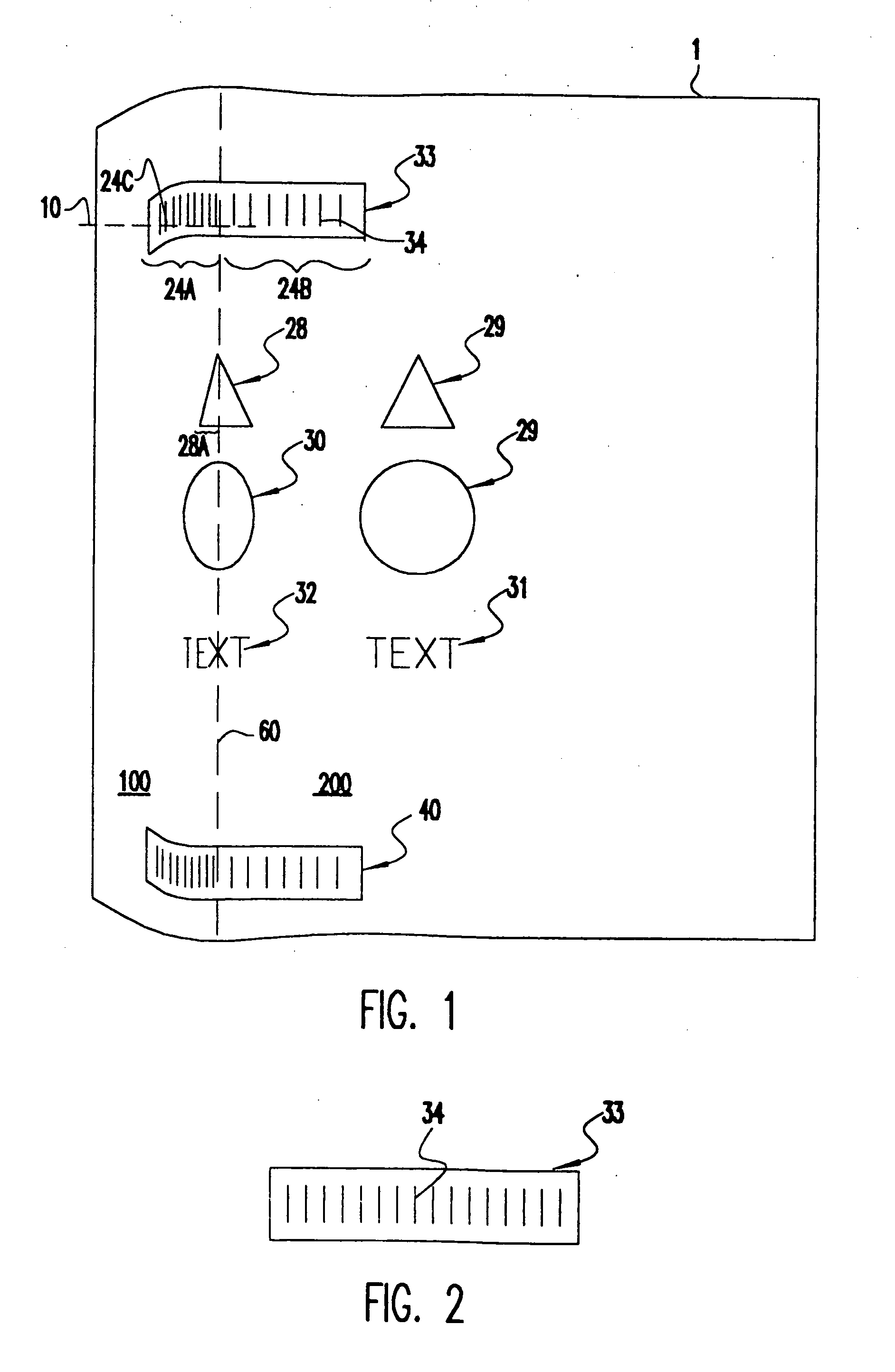Method and apparatus to correct distortion of document copies
a document copy and distortion technology, applied in the field of improving the quality of copies, can solve the problems of skew in the output copy, distortion in the output copy, and skew in the printing information (e.g., text, graphics, etc.) near the binding, and achieve the effect of less than satisfactory approach
- Summary
- Abstract
- Description
- Claims
- Application Information
AI Technical Summary
Benefits of technology
Problems solved by technology
Method used
Image
Examples
Embodiment Construction
[0029] The present invention is, in one respect, a method for correcting distortion in an image of a document with one or more curved areas which have been optically scanned by a copy machine, facsimile machine, personal computer scanner, or any other type of digital imaging device. The method is particularly well suited to correcting three-dimensional skew effects in images of pages taken from a book, magazine, journal, or other bound volume of substantial thickness; however, those skilled in the art can appreciate that the invention may be applied to a book of any size or even a single page which has curves along its sides or even in its interior portions that occurred, for example, as a result of bending, folding, or warping. The present invention is, in a second respect, a digital imaging device incorporating a processing unit that implements the method of the present invention.
[0030] Turning now to the specific embodiments, a page I of a book viewed two-dimensionally (e.g., in...
PUM
 Login to View More
Login to View More Abstract
Description
Claims
Application Information
 Login to View More
Login to View More - R&D
- Intellectual Property
- Life Sciences
- Materials
- Tech Scout
- Unparalleled Data Quality
- Higher Quality Content
- 60% Fewer Hallucinations
Browse by: Latest US Patents, China's latest patents, Technical Efficacy Thesaurus, Application Domain, Technology Topic, Popular Technical Reports.
© 2025 PatSnap. All rights reserved.Legal|Privacy policy|Modern Slavery Act Transparency Statement|Sitemap|About US| Contact US: help@patsnap.com



